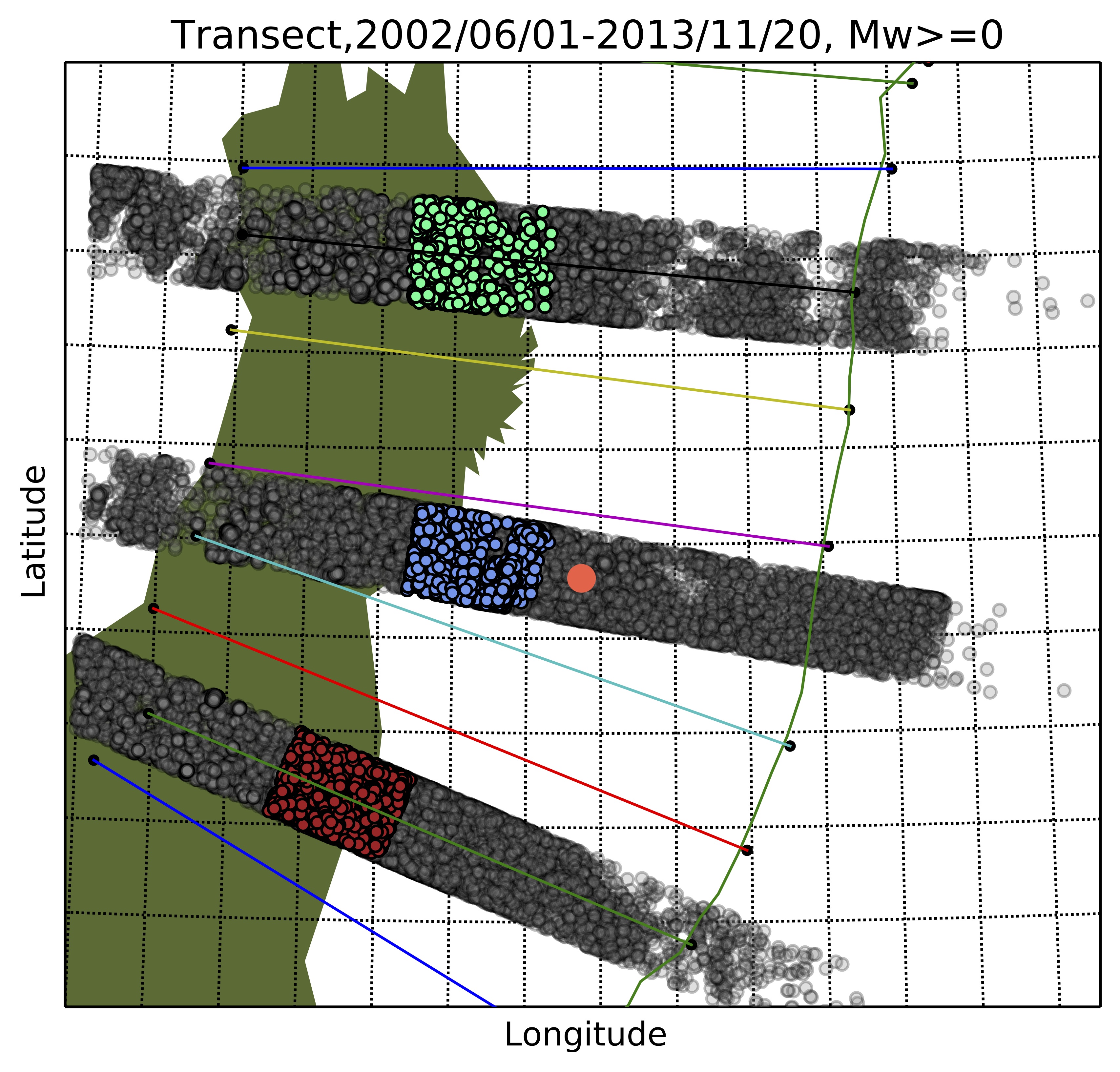
 |
|

Figure 1. Map Overview of Study Area. The large orange? circle shows the location of the 2011 Mw 9.0 Tohoku-Oki Earthquake hypocenter. The green line shows the location of the Japan trench, and the colored circles show the location of events used in this analysis. The grey circles represent the transect hypocenters not included in the temporal analysis.
| Project Summary |
In this study we examine the temporal changes of intraplate earthquake activity following the 2011 Mw 9.0 Tohoki-oki earthquake. Due to the large rupture area and displacement of the Mw 9.0 thrust event, we expect that the stress changes within the slab from the coseismic displacement and postseismic changes in stressing rate due to mantle relaxation and afterslip could be comparable in size with those from slab pull and slab bending. Consequently, we examine if the intermediate-depth earthquakes down plate from the locked region reflect the stress change from the slab decoupling and corresponding postseismic processes. Specifically we expect that earthquake activity in the upper plane of the Tohoku region, which is largely down dip compressional, would be promoted, while the earthquake activity in the lower plane, which is largely down-dip extensional would be suppressed, relative to their pre-Tohoku-Oki Earthquake levels. Capitalizing on insights into the large-scale and long-term behavior of deformation in subduction zones using models of thin sheets we quantify the effect of slab bending on subduction zone seismogenesis. We combine laboratory-based rheological models, precise estimates of slab shape from relocated earthquake hypocenters, estimates of the state of stress in the plate from intraplate focal mechanisms, and response to the 2011 Tohoku-Oki Earthquake to provide constraints and insights for intraplate subduction zone seismogenesis. In order to resolve the contributions of the multiple mechanisms to the state of stress in the subducting slab we will examine the temporal variation of the intermediate earthquake activity in the Tohoku region following the 2011 Tohoku-Oki Earthquake. Specifically we hope to parse out the role of each of the following processes in the generation of the stress regimes inferred from the earthquake focal mechanisms: bending, slab-pull, dynamic coupling and postseismic processes. We utilize earthquake hypocenters from the JMA catalog, which utilizes a dense seismic network completed in 2002 that includes over 1200 stations and records approximately 105 events per year. We test whether the Tohoku-Oki 9.0 thrust event promoted compressional events and suppressed extensional events at intermediate depths by examining how the relative number of events in the contractional upper plane and extensional lower plane of the Tohoku double seismic zone change before and after the thrust event. It is important to examine the ratio rather than the absolute number of extensional and compressional events due to the overall increase in seismicity following the Mw 9.0 event.
|
| Tools | JMA Hypocenters, Declustering Analysis, Coseismic and Post-Seismic Stress Distributions, Asymptotic Thin Plate Approximation |
| Geographic Location | Tohoku, Japan, Oshika Peninsula |
| Group Members Involved |
Brent Delbridge <Email> Roland Bürgmann |
| Project Duration | Jan 2012 to Jan 2014 |
| More Information | < Homepage > |